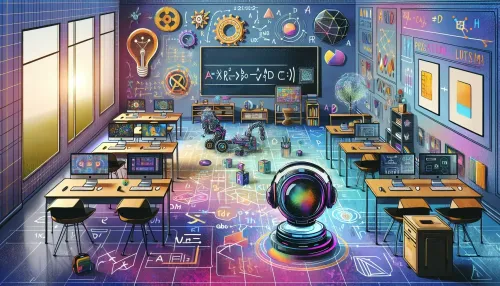Fueling Innovations in Autism Therapy: The Rise of Biofeedback Technologies

Autism affects millions of families around the world, and managing its diverse challenges can be a relentless journey. Innovations in technology offer new hope and HorizonsMind Blog is at the forefront of providing insightful discussions on such advancements, particularly in biofeedback technologies that are pushing the boundaries in autism therapy.
Harnessing Biofeedback for Autism Therapy
Biofeedback is a non-invasive treatment method that teaches individuals to change physiological activity for the improvement of health and performance. Precise instruments measure physiological activity such as brainwaves, heart function, breathing, muscle activity, and skin temperature, feeding that information back to the user. For autistic children, who often struggle with communication and regulation of their emotions or sensations, biofeedback presents a promising therapeutic gateway.
One size does not fit all in the realm of effective autistic support strategies. Personalized biofeedback programs have become a game-changer for autistic kids and their families. Such programs use real-time data to tailor therapeutic approaches to each child’s unique neural patterns. This individualization allows for more efficient and targeted therapy sessions, possibly reducing the time and effort required compared to traditional methods.
Personalized Biofeedback Programs for Autistic Children
Wearable biofeedback devices have revolutionized how caregivers and therapists monitor an autistic child's progress. These devices provide ongoing, objective data outside of clinical settings – a vital extension into daily life where most of the learning occurs.
Autistic individuals often experience heightened sensory sensitivities which can result in overwhelming stress or anxiety. By utilizing biofeedback technologies, both therapists and parents can gain insights into what specific stimuli trigger adverse reactions in children. This knowledge can help create tailored environments that minimize discomfort or prepare the child for unavoidable sensory experiences.
Transforming Autism Interventions with Wearable Devices
Self-regulation is a complex skill but necessary for children with autism to lead more independent lives. With biofeedback devices, kids learn to recognize their physiological responses to stress or anxiety and apply strategies to control these reactions. Gradually, they gain mastery over their own bodies which reap confidence and encourage self-regulation.
Managing Sensory Sensitivities through Biofeedback
Emerging technologies like artificial intelligence (AI) complement biofeedback mechanisms by offering advanced data analysis capabilities which further personalize therapy. AI algorithms are adept at detecting patterns and predicting needs, thus refining biofeedback-based interventions for autistic children over time with increasing precision.
Related Article: Data-Driven Parenting: Leveraging Technology for Informed Decision-Making in Autism Care
Empowering Self-Regulation in Autistic Kids
Researchers continuously explore new applications of biofeedback in autism care, pushing the boundaries of existing therapies. Some recent studies are investigating neurofeedback (a type of biofeedback that focuses on brain activity) as a way to enhance communication skills and decrease repetitive behaviors those with autism often struggle with.
Navigating through an assortment of biofeedback tools can overwhelm any parent. However, understanding each device's features such as ease of use, comfort during wear, battery life, data output, support software – can guide one to make an informed decision about which tool might best suit their child’s needs.
The Role of AI in Enhancing Biofeedback Therapy
Before biofeedback devices reach our living rooms, they undergo rigorous testing in labs to ensure they're both safe and effective. The journey from innovative prototypes to mainstream markets requires regulatory approvals and validation studies but witnessing them become integral parts of daily management routines is a triumph for all involved in autism care.
Recent Breakthroughs in Biofeedback Research for Autism
Through technology's lens, HorizonsMind Blog reflects optimism about what's possible when biofeedback devices are integrated thoughtfully into the lives of autistic children – one innovative step at a time.
Frequently Asked Questions
Biofeedback is a non-invasive treatment that teaches individuals to control physiological functions. For autistic children, it helps improve emotional regulation and communication by providing real-time data on their physiological responses, enabling them to manage stress and anxiety more effectively.
Personalized biofeedback programs utilize real-time data to tailor therapeutic approaches to each child's unique neural patterns. This customization allows for more effective therapy sessions, making it possible to address individual needs and potentially reduce the time required compared to traditional methods.
Wearable biofeedback devices provide continuous monitoring of an autistic child's physiological activity outside clinical settings. This ongoing data collection helps caregivers and therapists track progress, understand triggers, and create supportive environments that enhance learning and emotional well-being in daily life.
Check Out These Related Articles

Innovative Initiatives in Adaptive Education Technology for Autism Inclusion

Robotic Innovations Transcending Autism Support: Redefining Social Interaction and Skill Development

The Evolution of Autism Support Services in the Digital Age
